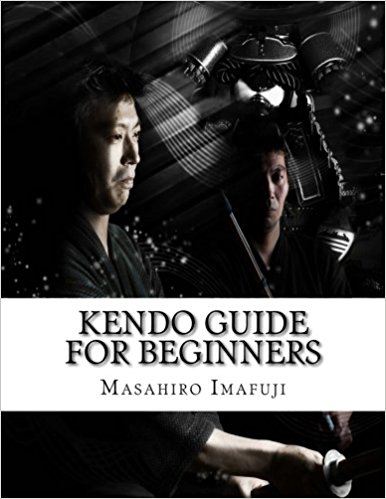You Got It!
ETIQUETTE and manners
for
complete kendo beginners
Transform your kendo experience with the essence of what makes it a true martial art - etiquette and manners. Kendo isn't just a simple stick fight, it's a path towards self-improvement and respect for others. Embody the true spirit of kendo with the integral role of etiquette in every aspect of your practice.
What do you learn here?
In this section, you are going to learn,
the meaning of the dojo
If you have a copy of Kendo Guide For Beginners, please go to page 12 and read “The Meaning of Dōjō”. In this lesson, I would like to go over some rules of dōjō.
You should act in a certain way when you are at a dōjō. That is because you are at a special place, where you train your physical and mental strengths. You don’t act as if you are at your living room. It is a place where you “discipline the human character through the application of the principles of the katana”.
Once you get into a dōjō, even if it is a gym, you should change your mindset.
- You bow when you get in to your dōjō.
- You take your shoes off before you get into the dōjō
- You bow when you leave the dōjō.
At least, I want you to do the things above.
How Much Do You Follow The Rules?
Obviously, the rules of the dōjō are of Japanese culture. That means some rules may not culturally appropriate to you. If that is the case, don't worry about the rules so much. If it's your culture doesn’t accept some of the rules or if your religion doesn't accept them, you simply cannot follow them.
rules
I listed the rules in the page 13 of “Kendo Guide For Beginners”. So, I will give you some basic ideas.
Shinzen
Usually, we have shinzen, which means a shrine, at a dōjō. The shinzen literally means the god front. Traditional dōjō enshrines the martial gods. I am sharing general ideas so this might not apply to some dōjō. Now if you don't have one at your dōjō, that is fine. If you have a religious reason and you cannot have one, that’s fine. The important thing here for you to know that the dōjō is a special place. I'm just sharing Japanese culture with you.
Shōmen
Shōmen is the front of the dōjō. This is simply where the shinzen is. Even in Japan, many dōjō don’t have shinzen anymore. In Japan people train at a gym more often than at traditional dōjō. The reason is simple. We have less dōjōs now. And renting a gym is much easier than building a real dōjō. That is why the shōmen is the term we hear most of the time.
Shōmen is usually at the north side of the dōjō. The east is higher place of the dōjō. The highest grade holders should be sitting on the east side of the dōjō.
If you ever get confused which direction is the higher place, think about the sunrise and sunset. The sun comes from the east. And it goes down to the west. The main instructor will be at the north side of the dōjō when lined up.
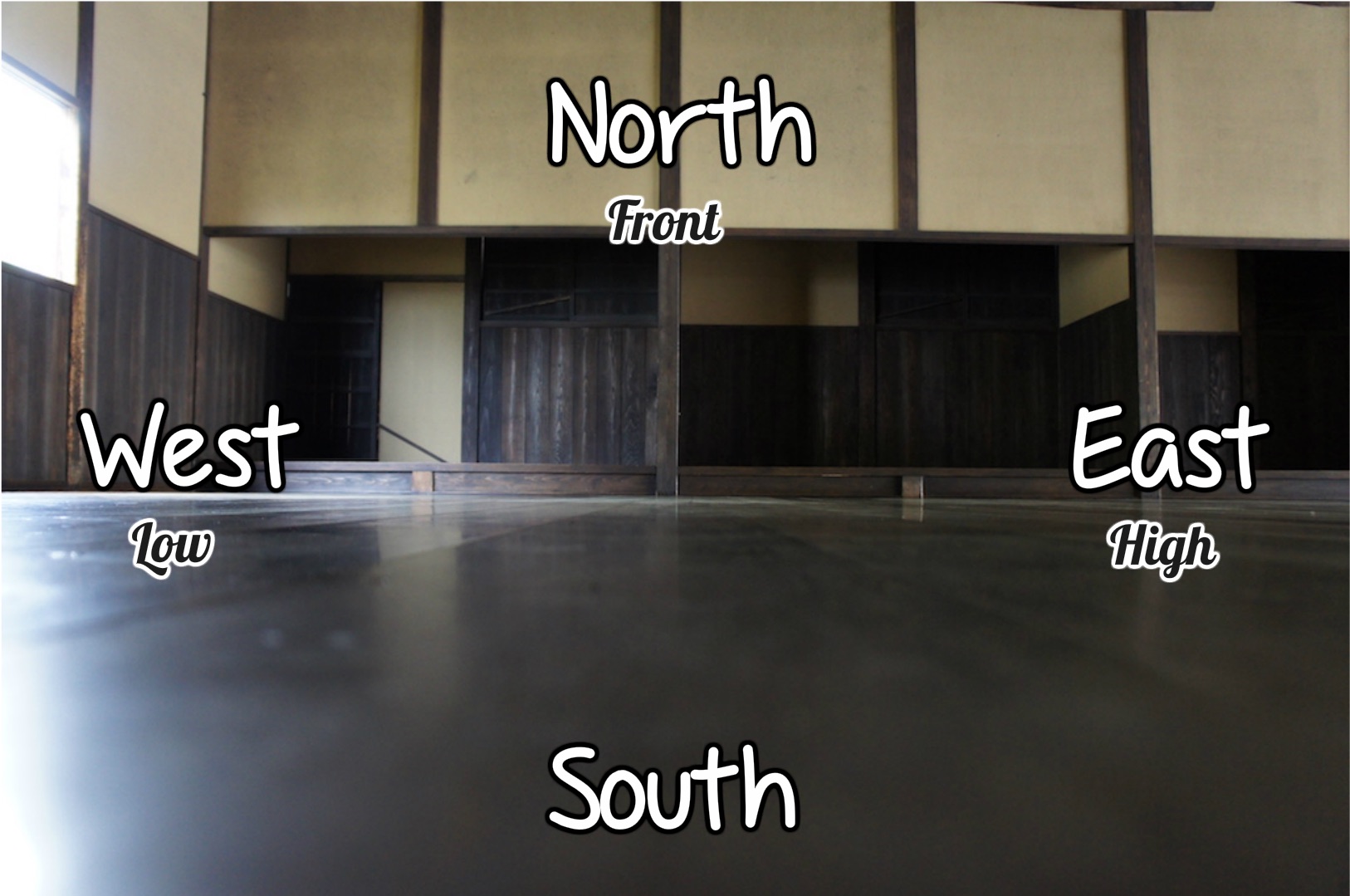 The Directions and Positions at the Dojo
The Directions and Positions at the DojoRemember not to sit in front of the shōmen, if you are a main instructor. So basically the shōmen is the center of the north side of the dōjō. Avoid that position. When you have a lot of instructors and cannot avoid from sitting in front of the shōmen, then go ahead. When you cannot avoid, you cannot avoid; unless instructed by a higher grade holder.
The Main Entrance And Positions
This is motioned in page 13 of “Kendo Guide For Beginners”. Let me quickly go over it.
The highest grade holders of the students sit at the east side of the dōjō. But when the main entrance is at east, they will sit from the west side of the dōjō. That is because someone (usually enemies) comes in through the main entrance , those who are located at the lowest will defend first. That is the main idea. More detailed explanation is in the book.
There is a list of all the information what you should be and shouldn’t be doing on page 14 of “Kendo Guide For Beginners”. Again, it depends on where you are and what cultural background you have, these might not apply but that is fine.
What to follow and what not to follow are hard to say. In the kendo community we have talked about it and probably there will be an ongoing discussion. However, kendo carries Japanese cultural and historical values. As much as you want to keep your culture, please do show respect to Japanese culture too.
- Deepen your Knowledge on the Meaning of the Dojo
- General Idea of Etiquette and Manners in Kendo
standing bow = Ritsurei
Ritsurei is a standing bow. We have two standing bows; one is bound to shōmen or to those who are higher grade holders and the other one is a bow to your opponent.
When you bow, make sure that your hands are on the sides of your thighs. Not the front of your thighs in kendo. You see the Japanese bowing with their hands on the front of their thighs, but we don’t do that in kendo.
Bow to Shōmen:
You look down and look at about 3 meters away from you. 3 meters is about 10 feet. Do not look at the Shōmen or the person you are vowing to. The angle of your bow is about 30 degrees.
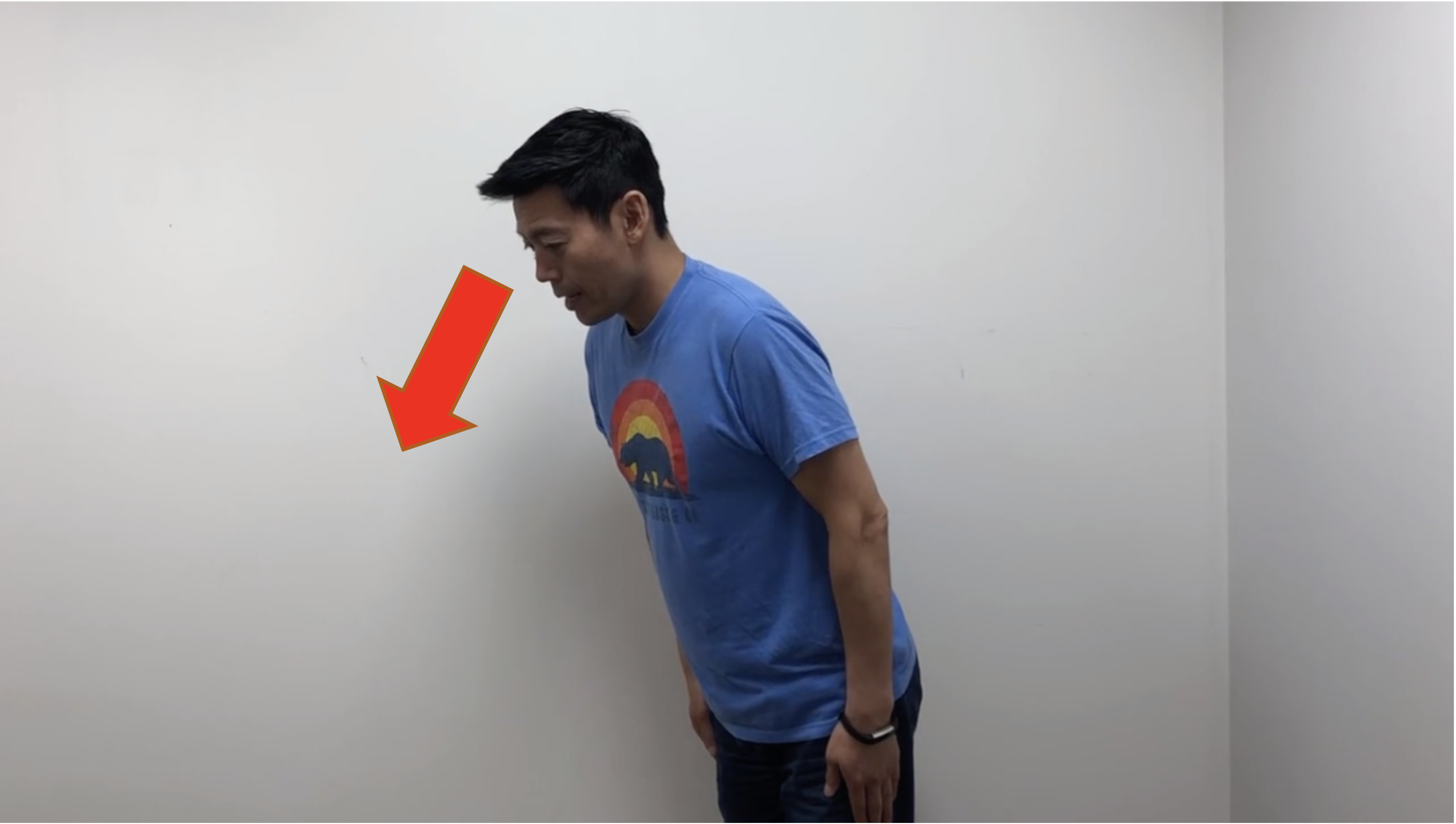 Bow to the shōmen
Bow to the shōmen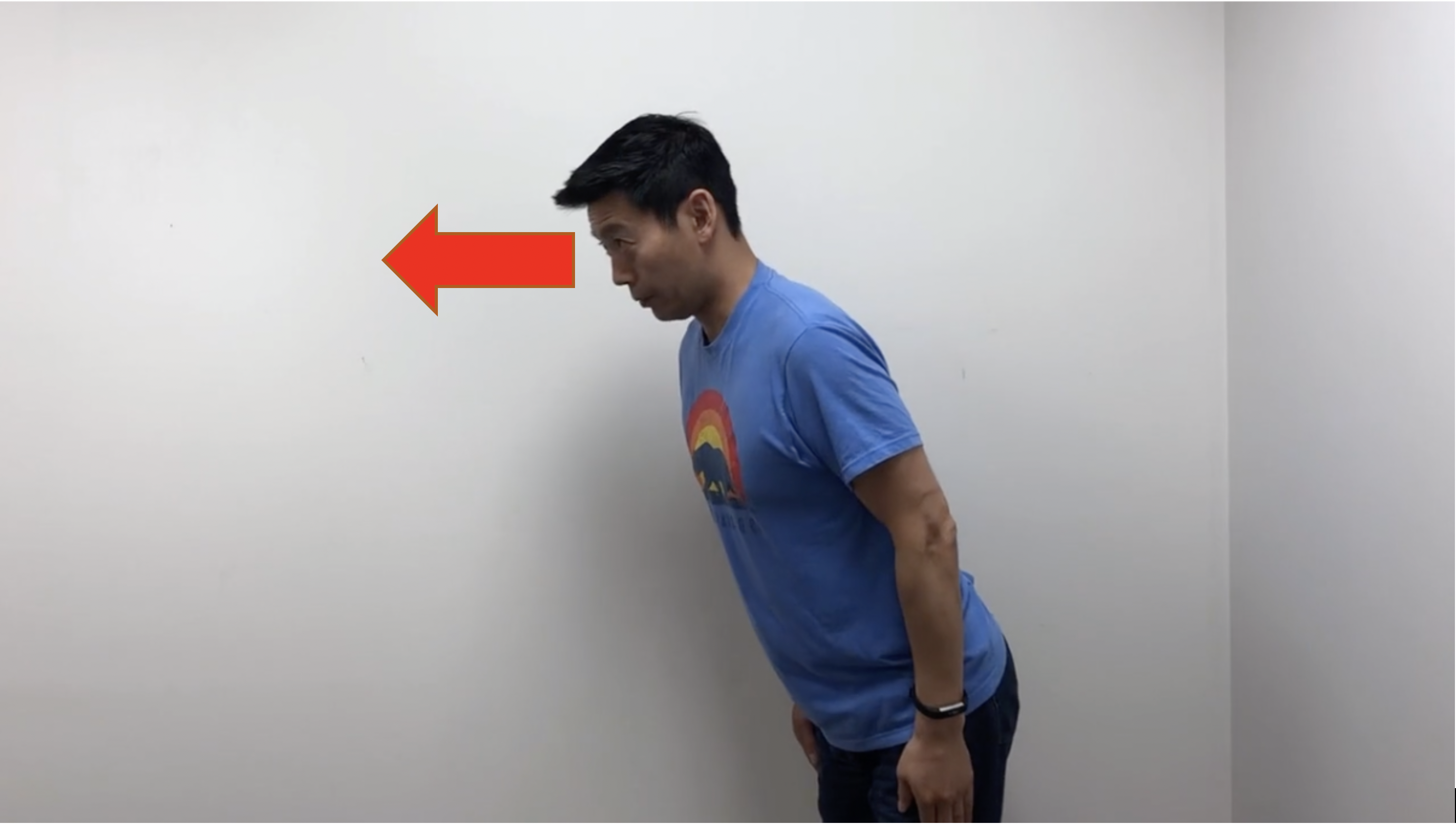 Bow to Each Other
Bow to Each OtherCommon Mistakes
- Roll your shoulders in and move the hands forward
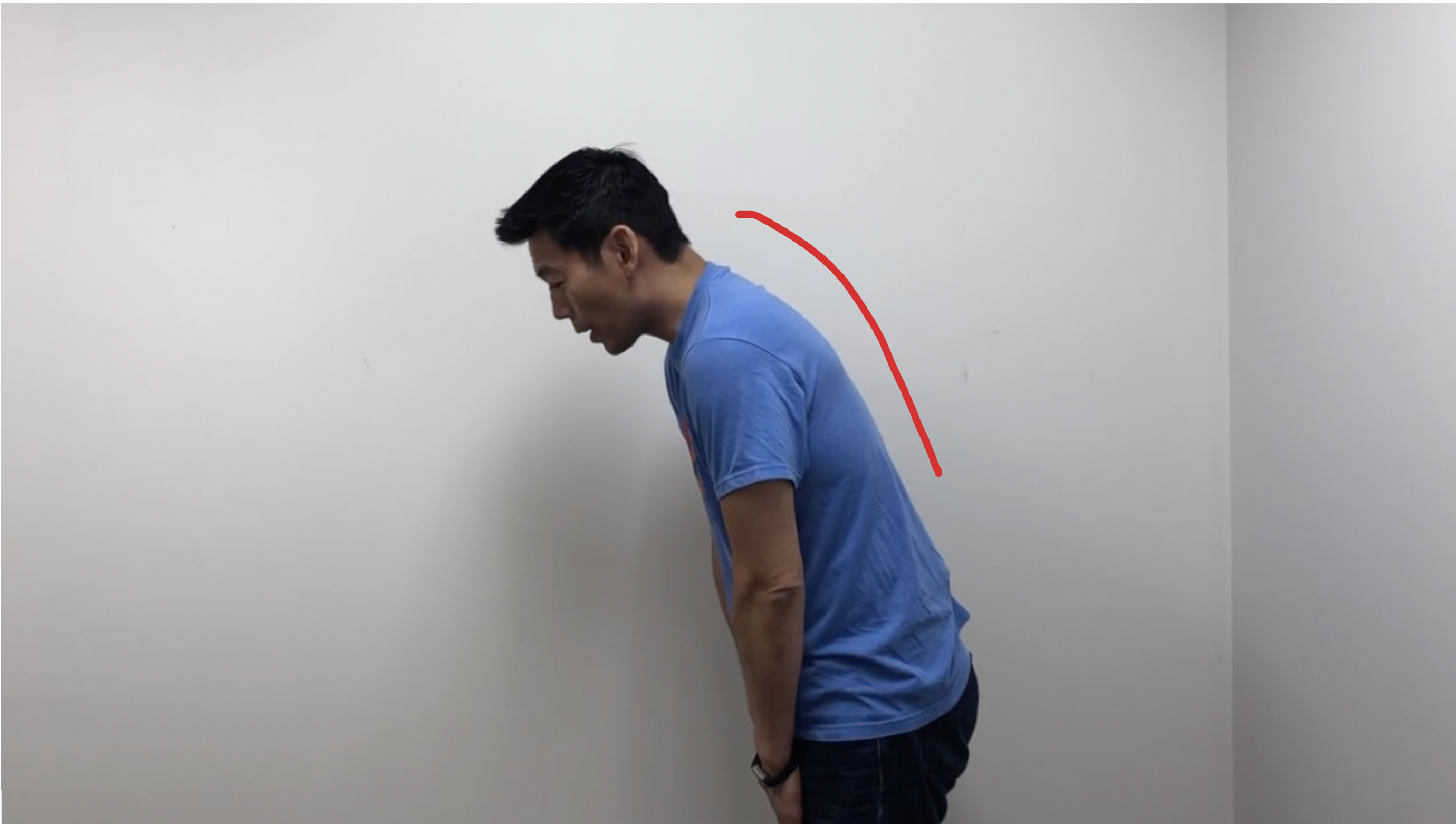 The hands on the front of the thigh and Shoulders are rolled
The hands on the front of the thigh and Shoulders are rolled- Move your chin out
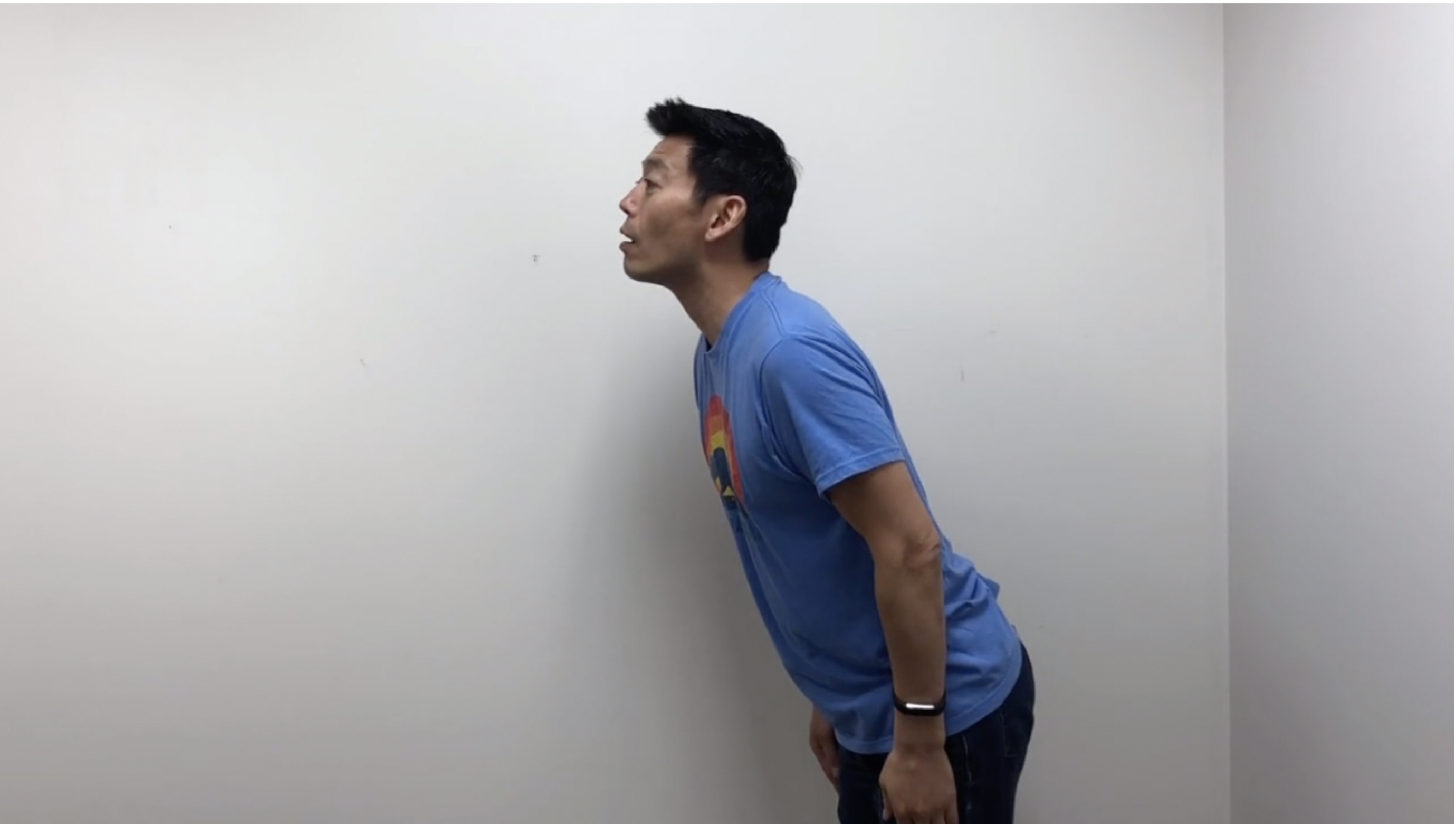 Sticking the chin out
Sticking the chin outIf you have a tendency of moving your chin away from you when you bow, just put your finger on your chin as seen in Figure 4. And once you get the hang of it, remove your hand.
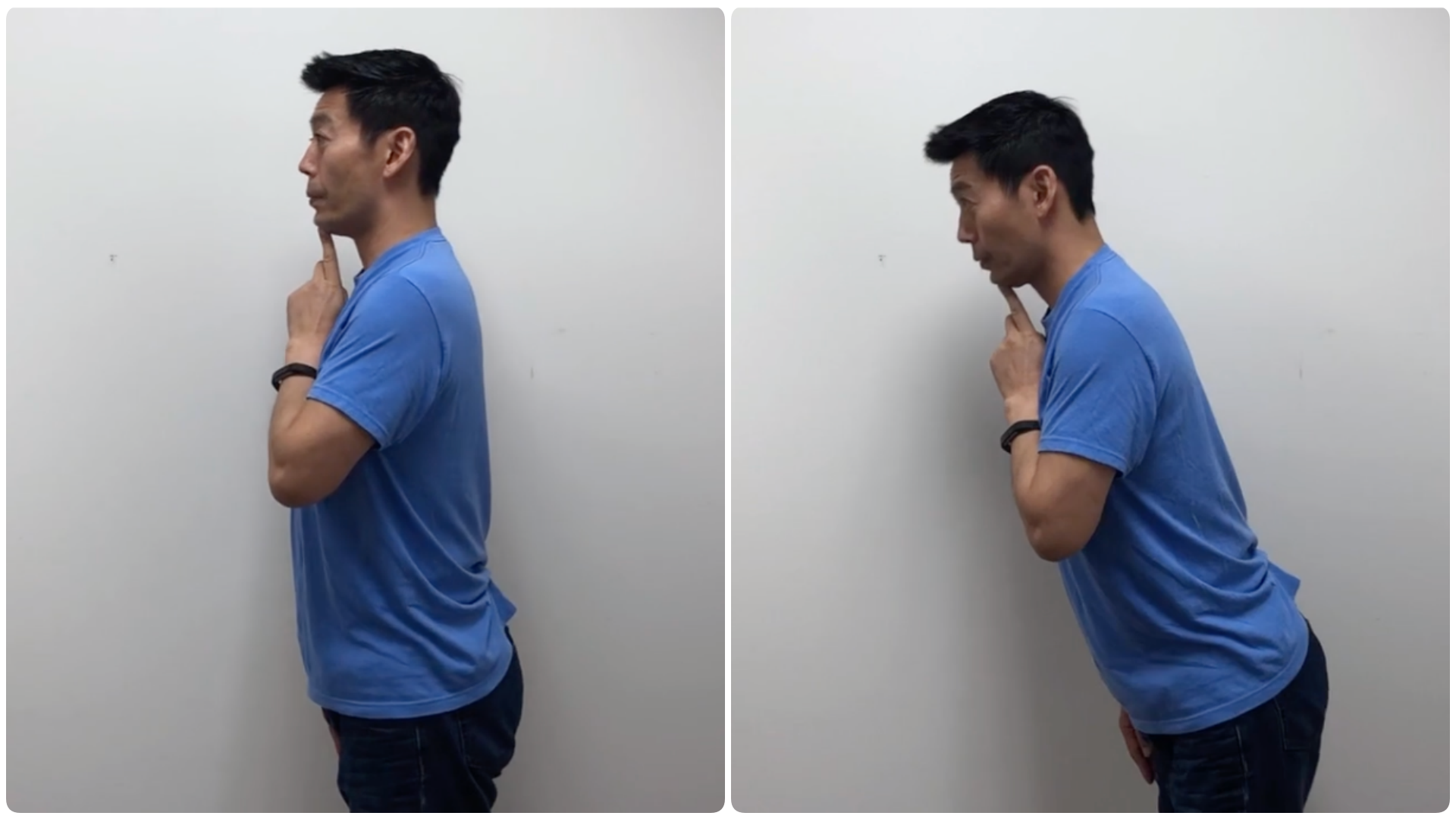 Keep the Chin in with Your Finger
Keep the Chin in with Your Finger- Check the Ritsurei in general procedure.
"Kendo Guide for Beginners" and "Kendo Guide for Complete Beginners" are available. "Kendo Guide for Beginners" is designed to help those who already go to a dojo. "Kendo Guide for Complete Beginners" is made so you will gain even better understandings in kendo. The latter has more detailed videos available.
Sitting Bow = Zarei
Zarei means a sitting bow. Once you sit in seiza, start sliding your hands to the floor. Make sure you are relax.
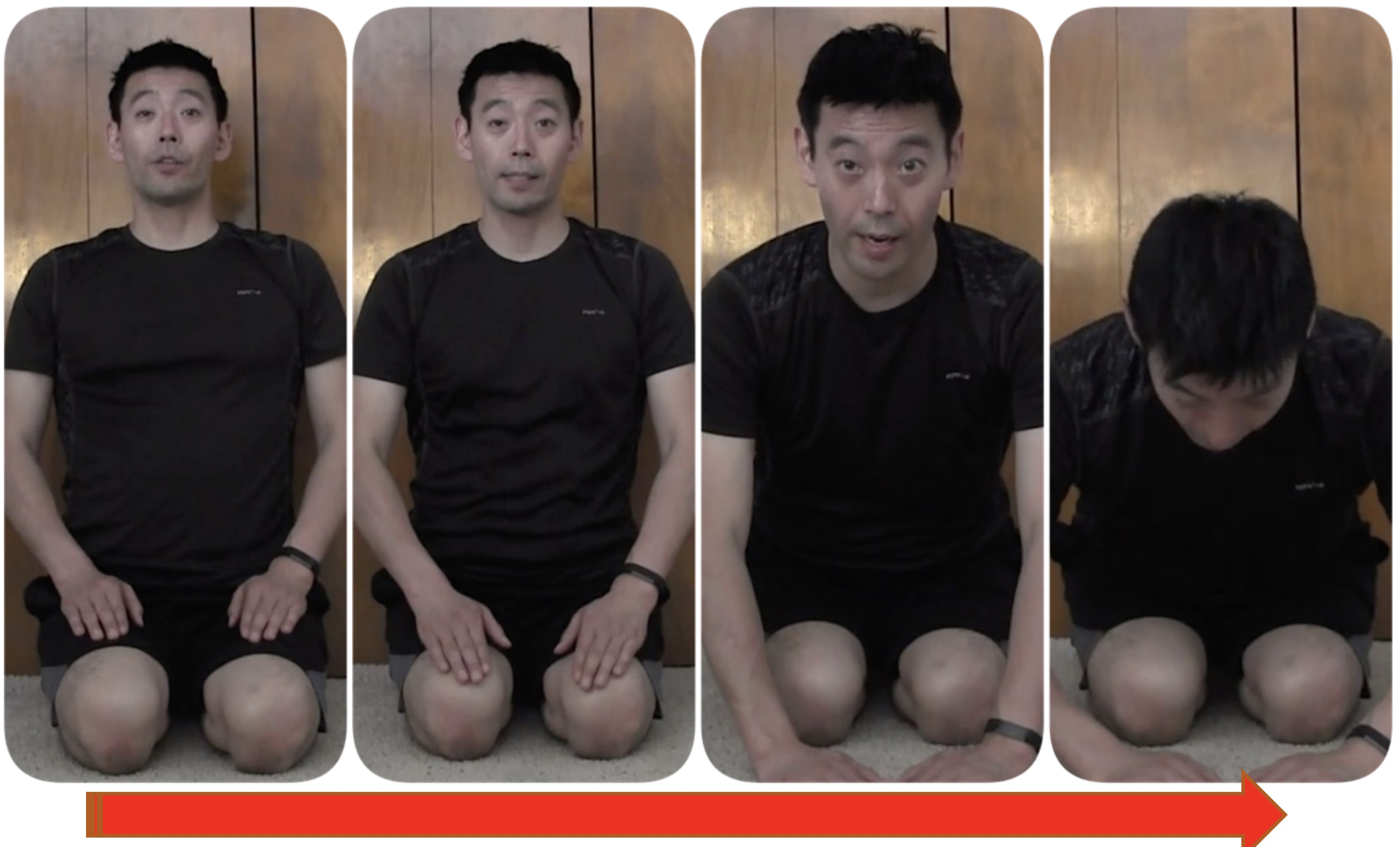 Figure 1: Sequence of Zarei
Figure 1: Sequence of ZareiAnd then make a triangle with your hands (see Figure 2). You make a triangle with your hands because when someone push you down from the behind you can protect your nose and make sure you can breathe as well.
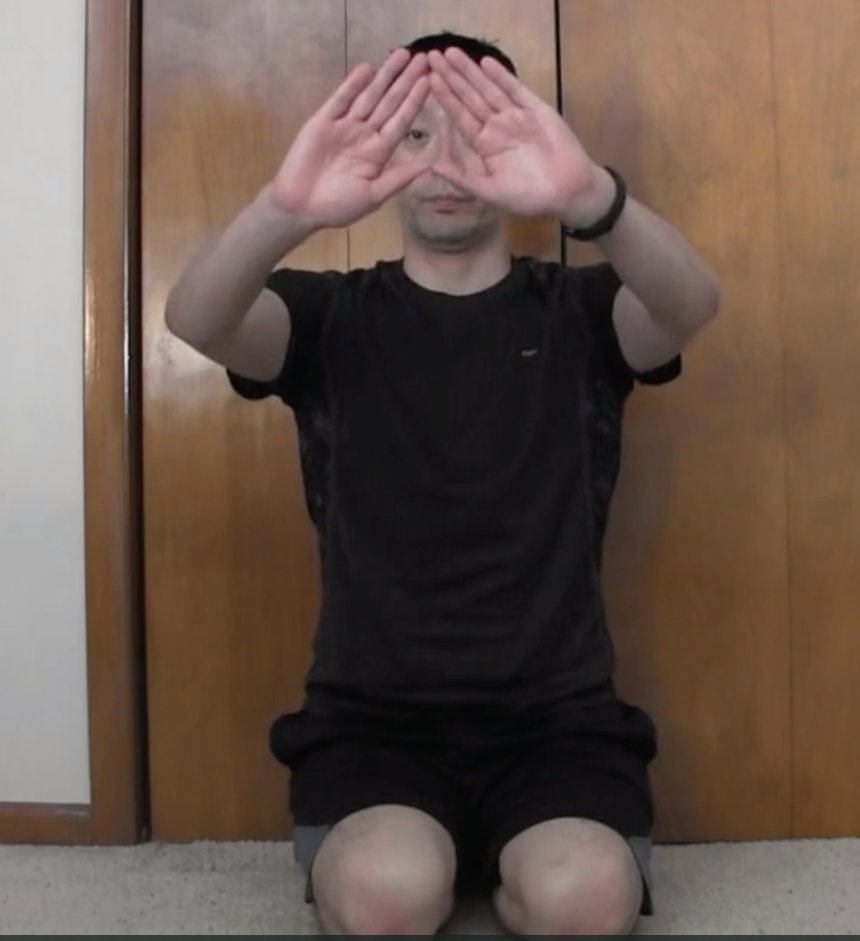 Figure 2: Make a triangle with your hands
Figure 2: Make a triangle with your hands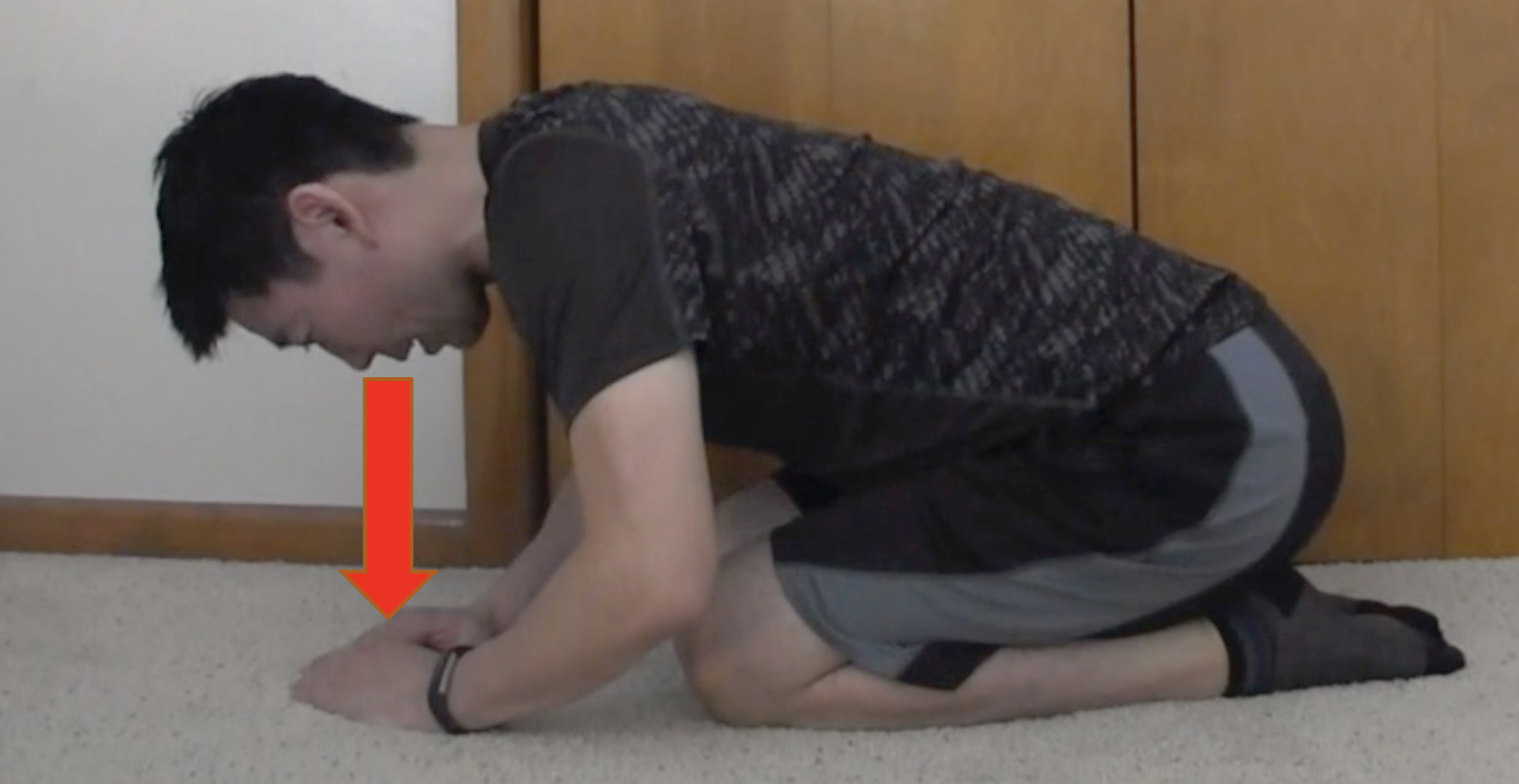 Figure 2: Make a triangle with your hands
Figure 2: Make a triangle with your handsIf you don’t know where your hands should be or to check if you are bowing right, place your triangle below your nose.
To be able to bow properly with a proper hand position, you should keep your back straight when bowing. You should bow from the hipbone (Figure 4). Do not roll your back (Figure 5). Keep your back straight and then slide your both hands together and bow.
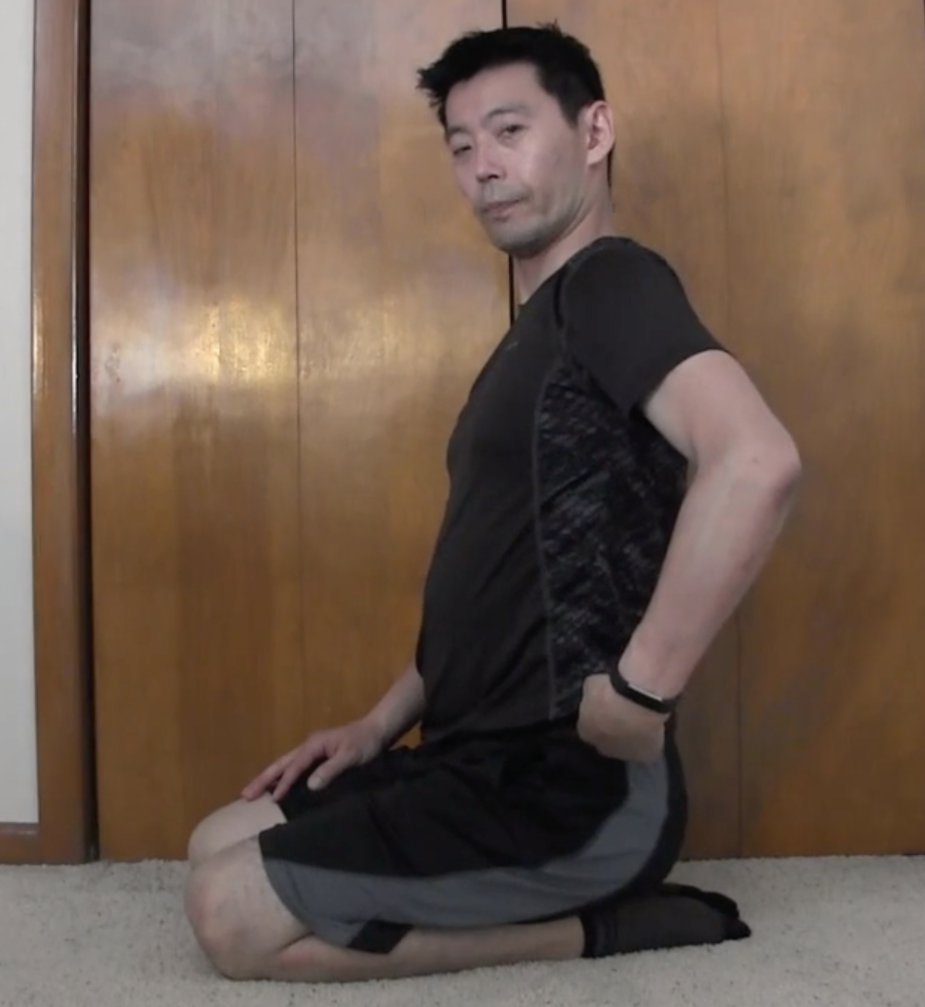 Figure 4: Bow from the Hipbone
Figure 4: Bow from the Hipbone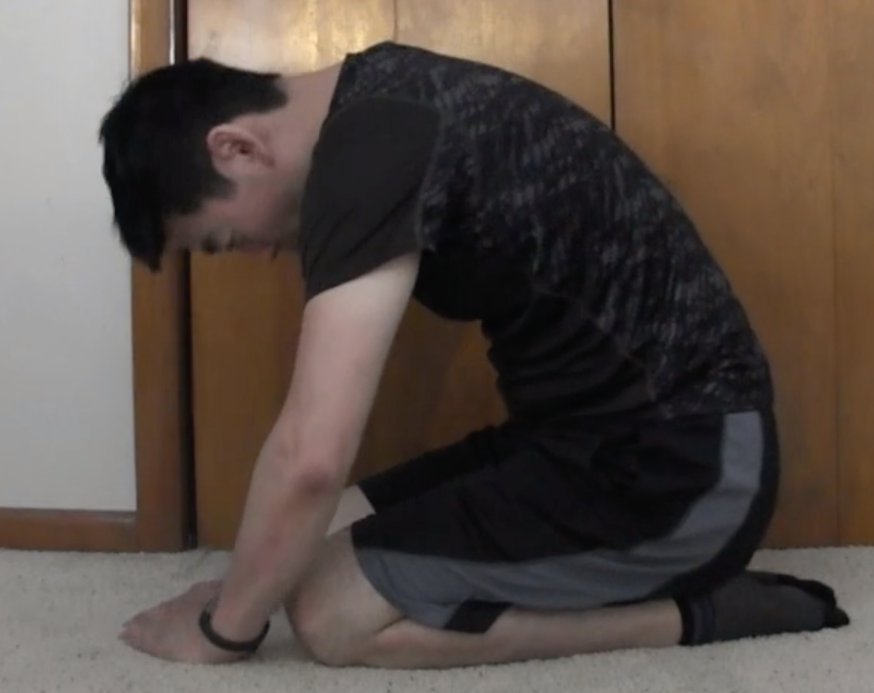 Figure 5: Bad Example. Rolled shoulders/back
Figure 5: Bad Example. Rolled shoulders/backDon't go too low (Figure 6). If you go too low, you cannot see around. Your head should be low enough to show respect, but high enough you can still see around.
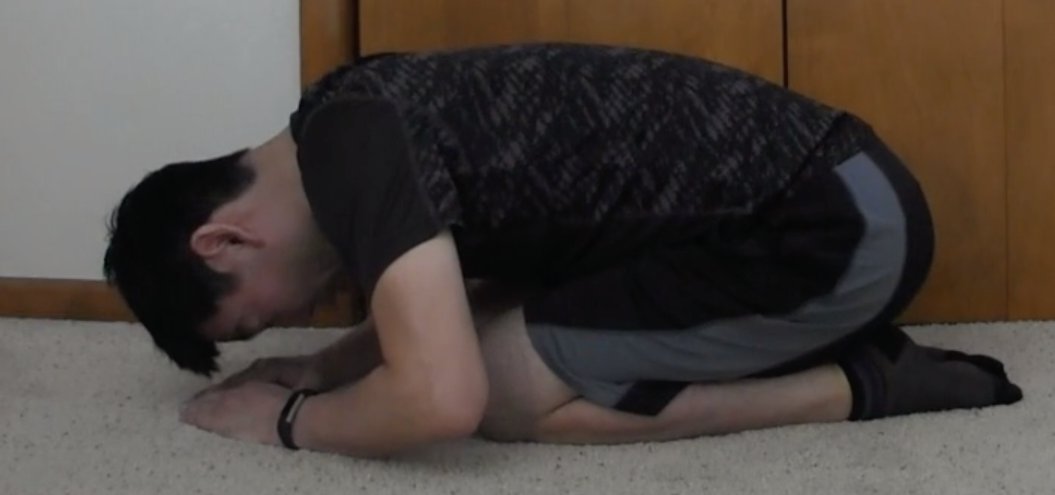 Figure 6: The face is too low. You cannot see around.
Figure 6: The face is too low. You cannot see around.If you bow with sliding down your left hand first and then your right hand just like seen in iaido, that is OK. That is not wrong. Intentional Kendo Federation decided that we should bow with putting our hands together on the floor at the same time. That's why I'm explaining to do this type of bow in the video.
Mokuso
Mokusō is simply translated as meditation, but just don't need to consider it as serious as “meditation”. Just calm yourself down and try to focus on training. Before training, we do mokusō to focus on training. And after training, we can calm ourselves down.
Train Your Breathing
The important thing is breathing. It should be done through your stomach. Not through your chest. Now this breathing method is used for anger treatment and so forth. Deep breath such as meditation helps us to keep us healthy. I think everyone knows that now.
When breathing, we should lower your diaphragm. How do we know we can do it?
- Breathe in through your nose (2 to 3 seconds)
- Push the air to seika-tanden and hold it for a few seconds
- Breathe out through your mouth (10 to 15 seconds)
To get more oxygen, you should have a good posture (I don’t have to make it sure, do I?)
Now have one hand on your chest and the other hand on your stomach. If you are breathing through your chest, you can feel the pressure growing in your chest. That is not good. You need to feel the pressure growing in your stomach (lower abs). Then your breathing is good.
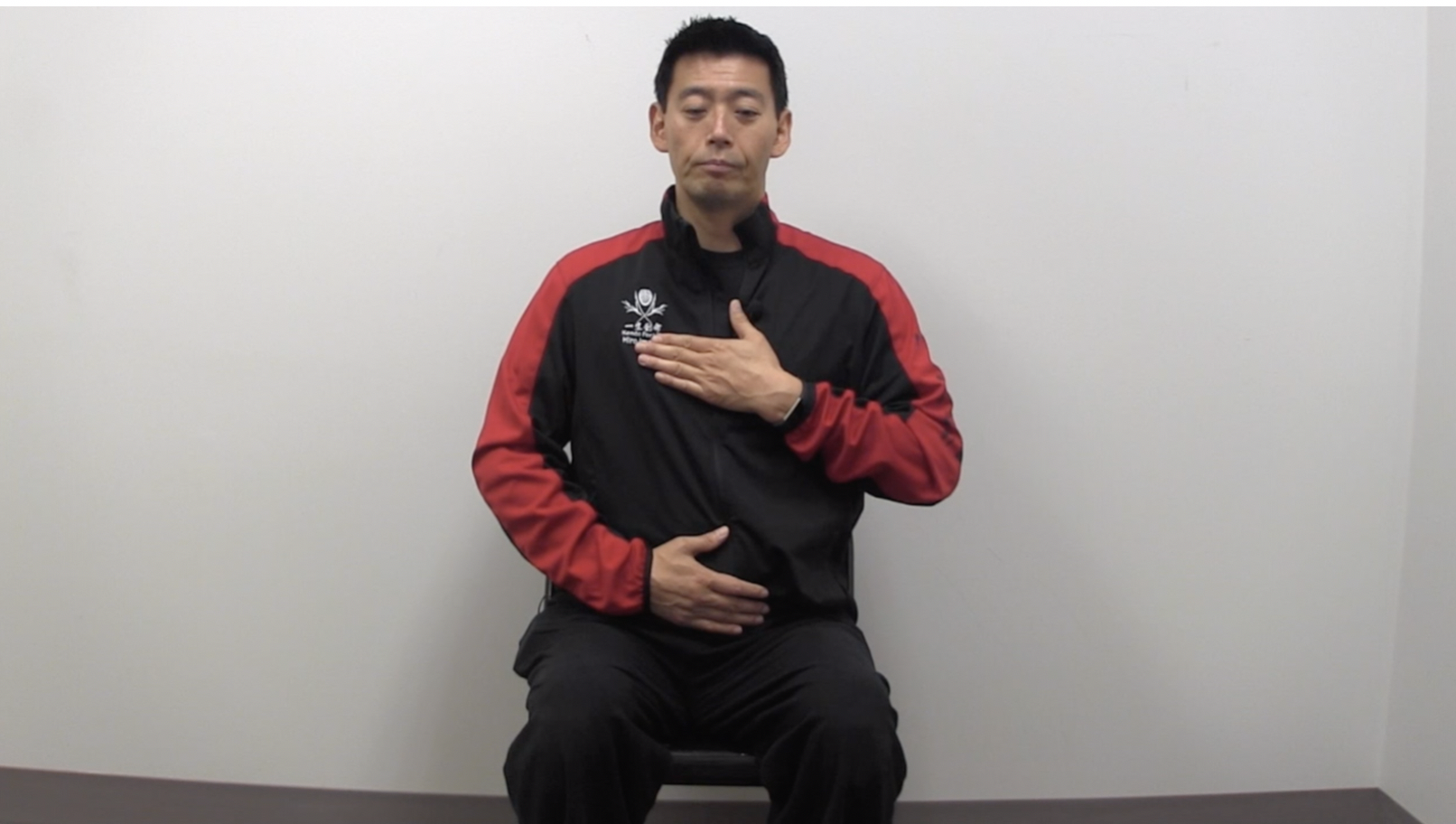 Figure 1: Check your breathing using your hands
Figure 1: Check your breathing using your handsImagine the air going down and stay in your circle you make with your hands (see below).
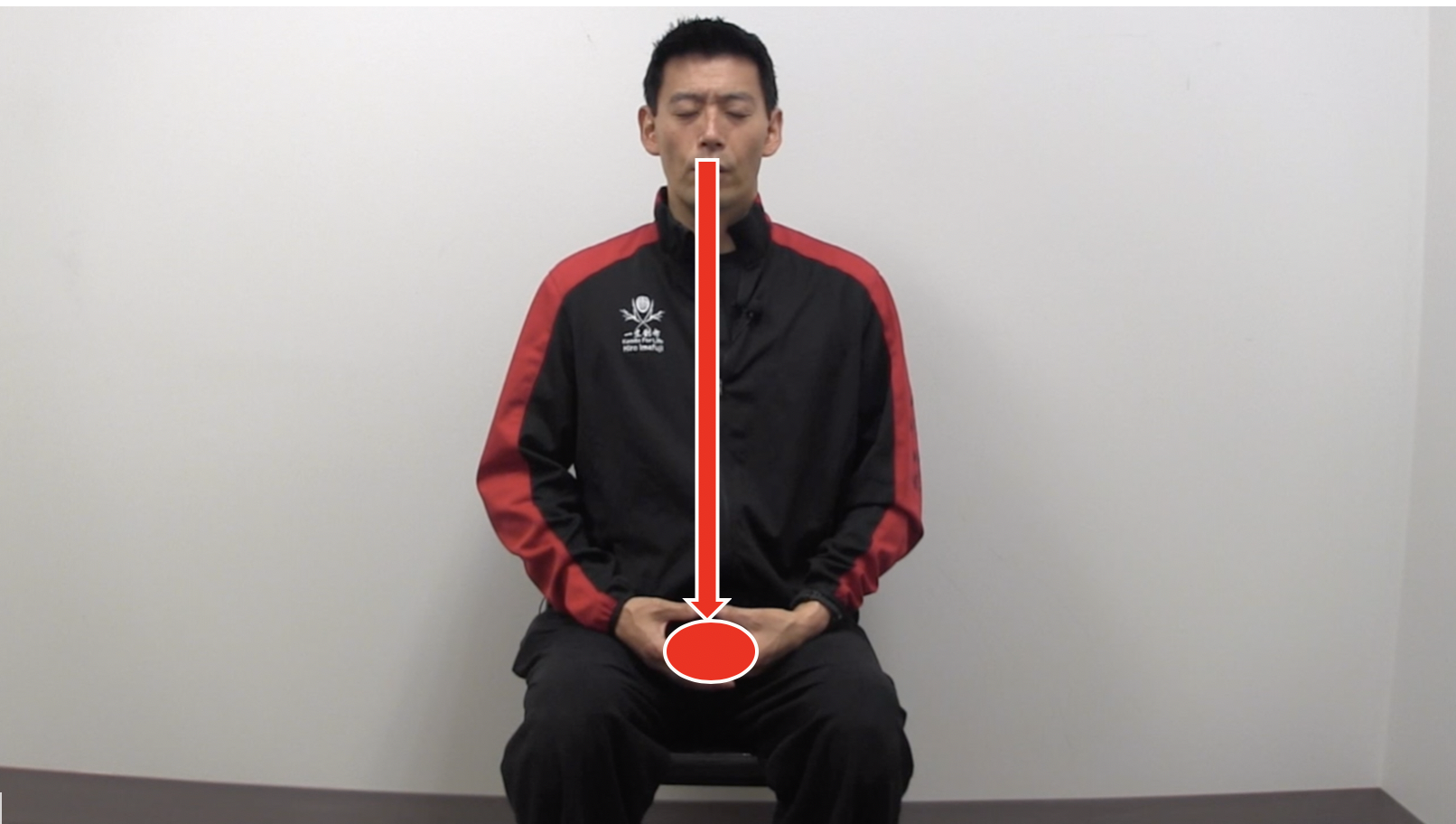 Figure 2: Imagine pushing the air down into the circle
Figure 2: Imagine pushing the air down into the circleDon’t Empty Mind
Just calm yourself down and think about what you're going to do. People say, “empty your mind”. Think about keiko and plan what you are going to do. But by doing so, your breathing might get shallow because you think too much. In such case, you can focus on breathing.
If a thought (nothing to do with kendo) comes into your head, just let it go. Let all those thoughts come in and come out. Just let it come in and let it go. Don’t fight. Allow it to go through in your mind.
After training, I try to call myself down. You can also look back into your training and list up what you could’ve done better and what you will do at the next training.
This breathing method is what we do during training. Breathe in through your nose quickly, push it down to seika-tanden, and shout all the air out as your kiai. And breathe in again quickly. This is how we breathe in kendo.
"Kendo Guide for Beginners" and "Kendo Guide for Complete Beginners" are available. "Kendo Guide for Beginners" is designed to help those who already go to a dojo. "Kendo Guide for Complete Beginners" is made so you will gain even better understandings in kendo. The latter has more detailed videos available.
Terminology
Must Know Words
- Onegaishimasu
- Arigato Gozaimashita.
1. Onegaishimasu
This means please train with me in kendo or in martial arts world. An example of how we use in the non-martial arts world is following. If you meet someone for the first time and you greet each other and then at the end you say "Onegaishimasu" or "Yoroshiku Onegaishimasu". That means please take care of me or please have a great relationship from now on. But in this situation at the dojo, Please Train With Me - Onegaishimasu.
2. Arigato Gozaimashita
Thank you very much! You may know that Arigato means thanks. And Gozaimashita is much politer. And this is a past tense, so Arigato Gozaimashita is something you say when you are thankful to something happened. So your partner trained with you and you are showing your appreciation. You are telling him thank you very much for having trained with me.
What is the difference between "Arigato Gozaimashita" and "Arigato Gozaimasu"? "Gozaimashita" is the past tense and "gozaimasu" is the present tense. But they can be used interchangeably in some situations but I don't want to talk about it here in this section. I do not want to turn this into a Japanese grammar class. So Arigato Gozaimashita is what you say in kendo.
Counting in Japanese
Let's learn how to count in Japanese:
- ichi,
- ni,
- san,
- shi (some people says yon) but usually we say shi when we just count but yon is not wrong.
- go,
- roku,
- shichi (or nana) - usually we say shichi, when we just count but shichi and ichi (one) sounds similar, so in that case we use nana as it is obvious.
- hachi
- kyu
- juu
So when you do suburi (empty cut), that’s how you count. Memorize these!
Beyond 10
In Japanese, once you learn numbers from 1 to 10, it is very easy to learn other numbers.
It is then going to be Juu+(ichi/ni/san…) and Juu is 10 and ichi is 1, so Juu-ichi is 11. Juu-ni is 12, Juu-san is 13, Juu-yon/I is 14, Juu-go is 15, Juu-roku - 16, Juu-shichi/Juu-nana - 17, Juu-hachi - 18, Juu-kyuu is 19 and ni-juu is 20 (ni is 2 and Juui is 10) and ni-juu-ichi - 21 and so on.
San-juu - 30, yon-juu, go-juu, roku-juu, nana-juu, hachi-juu, kyu-juu - 90 and hyaku is 100. It is a bit different. And hyaku-ichi - 101, we start from here. So, what is 111? - hyaku-juu-ichi, pretty systematic, right?
I am sure that you don’t have to count until 100. So you don’t have to memorize that. But please remember, Onegaishimasu and Arigato Gozaimashita.
Thank you for reading and I will meet you up in the next lesson.
In the video, I am pronouncing the terms in page 19 of Kendo Guide for Beginners. So please go and watch it to learn the pronunciation of these terms.
You will see a list of words here because written explanations will help your understandings of the terms. So some of the terms that are self-explanatory are not here. But if you have questions, please let me know.
Kendo Terms
1. Rei - that means bow. Generally, Japanese people can’t hear the difference between ‘r’ and ‘l’. So if you say lei, it is okay. It’s really between. When you roll your tongue too much as you are pronouncing ‘r’ in English, it sounds a bit unnatural but it’s okay. As Japanese cannot distinguish between ‘re’ and ‘le’, it is totally the same thing.
For example, really - it’s ‘r’ right? But "learry" sounds the same to the Japanese. That’s why most of the Japanese people mix them and I too still do it. So, when you meet me for the first time, please keep that in mind. :)
2. Shōmen or Shinzen - when you see a bar (-) above a letter, that means a long vowel. So instead of “Shōmen”, it is “Shoooomen”, you have to make it long. Japanese people can hear the difference between a short vowel and a long vowel. But of course, when you say Shōmen with a short "o", the Japanese can understand because of the context. Don’t be too nervous.
3. Sensei - this is how we write as well but when you pronounce it, it is okay to say - sen-see instead of sei. Again don’t worry about it too much. I am just giving some extra Japanese lesson here.
4. Hai - it means ‘Yes’. In Japanese, sometimes, yes means no. For example, when you ask, "do you mind doing something?" If you say, "Yes", that means, ‘Yeah! I don’t want you to do it.” On the other hand, "No! I don’t mind" means “Yes! go ahead.” That's how English works.
The Japanese people would answer you (because of the Japanese translations of the “do you mind”), "Yes". What they mean is "Yes, go ahead" Please remember that. I made a mistake in the past and because of that, I upset someone. Please remember that Japanese people will say, “Yes! (I don’t mind)” when you ask, “Do you mind?”, which means that they don’t mind.
When they say “Yes”, they usually mean, “I don’t mind!”. So, please don’t get upset. Please just step in a little bit more and say, "do you mean you are OK with it?" Maybe you shouldn’t use “Do you mind” while in conversation with your Japanese friend, because that will confuse you. That is just a tip for you.
5. Shinai - Very important!
6. Bokutō - I realize that outside Japan they use bokken more often than bokutō. Bokutō is more common in Japan but they are the same thing.
7. Keiko-gi - Gi means “wear”. So, when we say keiko-gi, it means the top of the training wear. It is also called kendo-gi, that means kendo wear. Because we all do kendo, so it’s keiko-gi is commonly used.
I understand that a lot of people just say “gi” but I have never heard Japanese people say, “gi” but maybe it is used in other martial arts world. But in kendo world, I have never heard that. Keiko-gi and kendo-gi are most commonly used in Japan.
8. Kiai - shout or yell, it is more like the internal energy - expression of your energy is kiai.
9. Sagetō - In iaido, I am sure they use keitō. Sagetō is same thing.
10. Taitō, nuketō, osametō and kamaetō - The sound “tō” in these words means the sword.
Different between nuketō and kamaetō. Nuketō means to draw out your sword and Kamaetō means to have your sword in stance. When most kendo people hear nuketō, what we do is we draw out our sword and sit in sonkyo and then come up. That’s a sequence of nuketō. And kamaetō is to draw out your shinai and take your stance.
Appearance
When you put your keikogi and hakama on, you must check how you look. The first thing you check is “wrinkles”. It is impossible to have no wrinkles, but you want to make it less. Remember not to look sloppy.
- Your neck should be touched on the collar of the keikogi. This means that you need to have a good posture too. Keep the back of your neck straight.
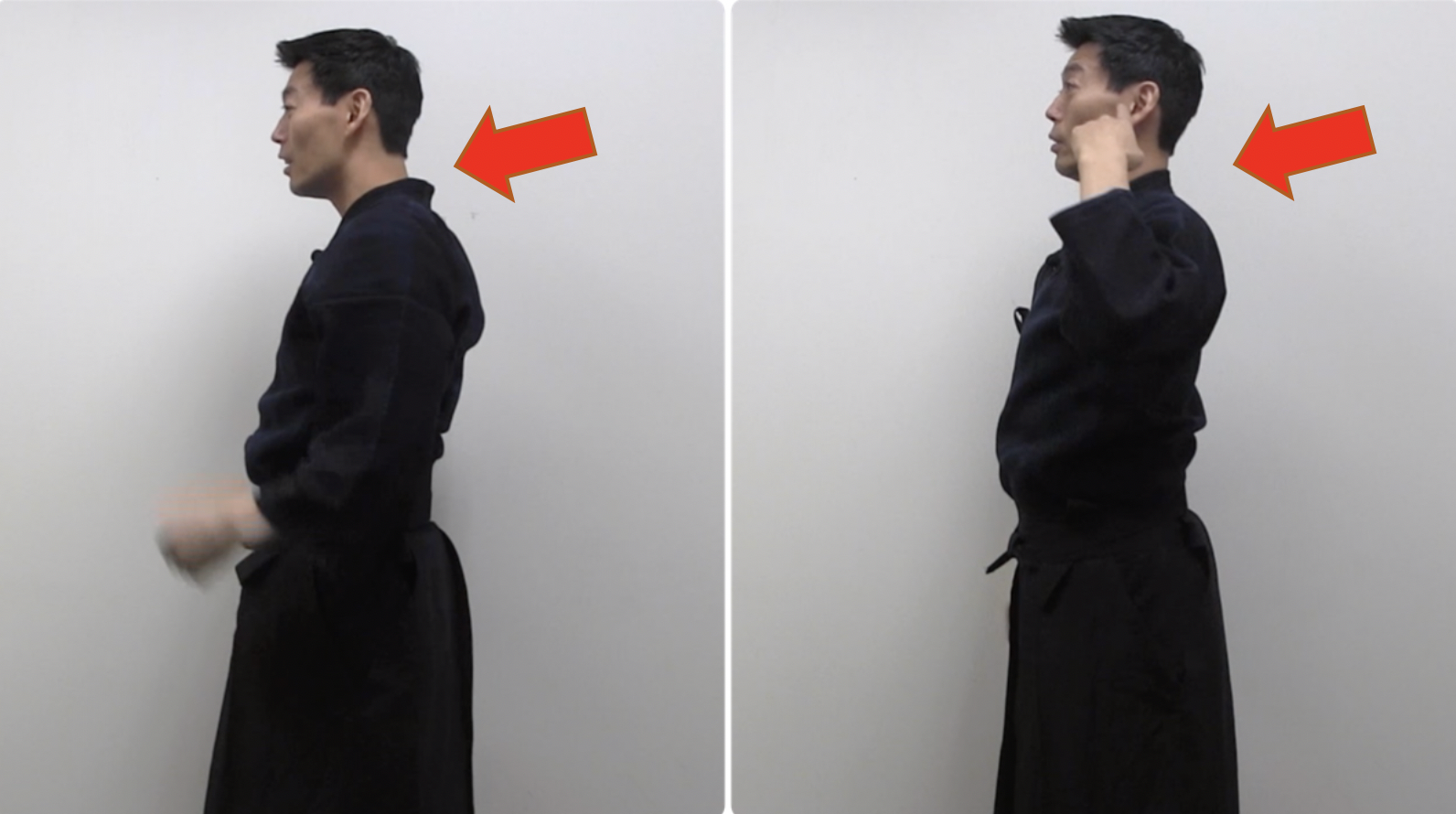 Figure 1: The collar of the keikogo should be touching your neck
Figure 1: The collar of the keikogo should be touching your neck- Pull your keikogi down as shown in the picture to remove wrinkles. Pull the keikogi to the sides at the back to remove wrinkles. Do this after you pull your keikogi down.
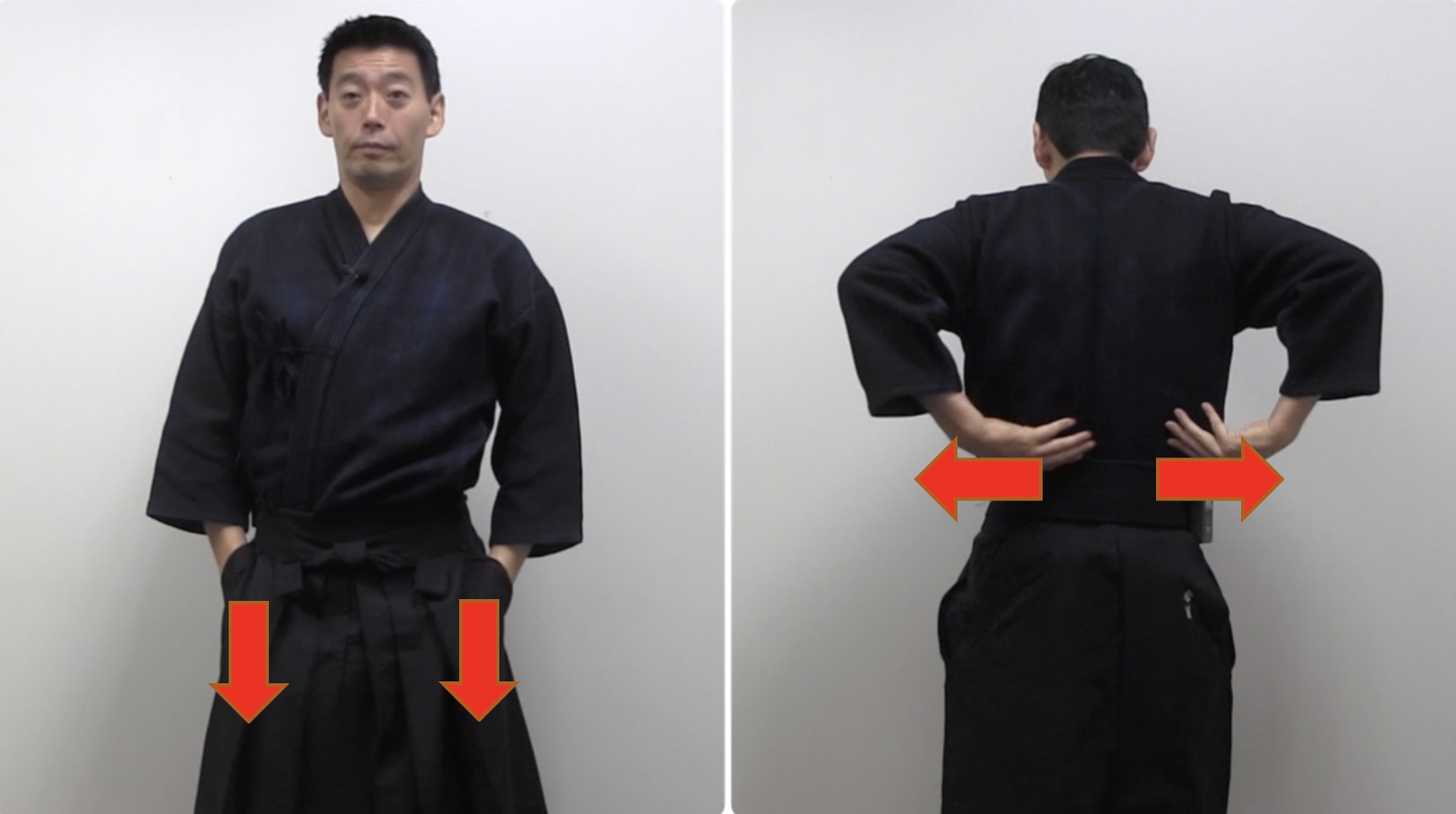 Figure 2: Pull keikogi down (left) and pull it to sides (right) to remove wrinkles
Figure 2: Pull keikogi down (left) and pull it to sides (right) to remove wrinklesYou cannot really see what's going on at the back. So, get someone to check your back, or just stand in front of the mirror. Always look neat.
Horizontal vs Vertical
Not only this nod but all the ribbons you make in kendo with the himo should be horizontal. Not vertical. There are many theories behind this. I will introduce two.
- The vertical ribbon is for the dead
- The flat indicates calmness as in heijōshin.
The kanji for hei in heijōshin is “flat”. Keep your mind flat (calm). That is what heijōshin means.
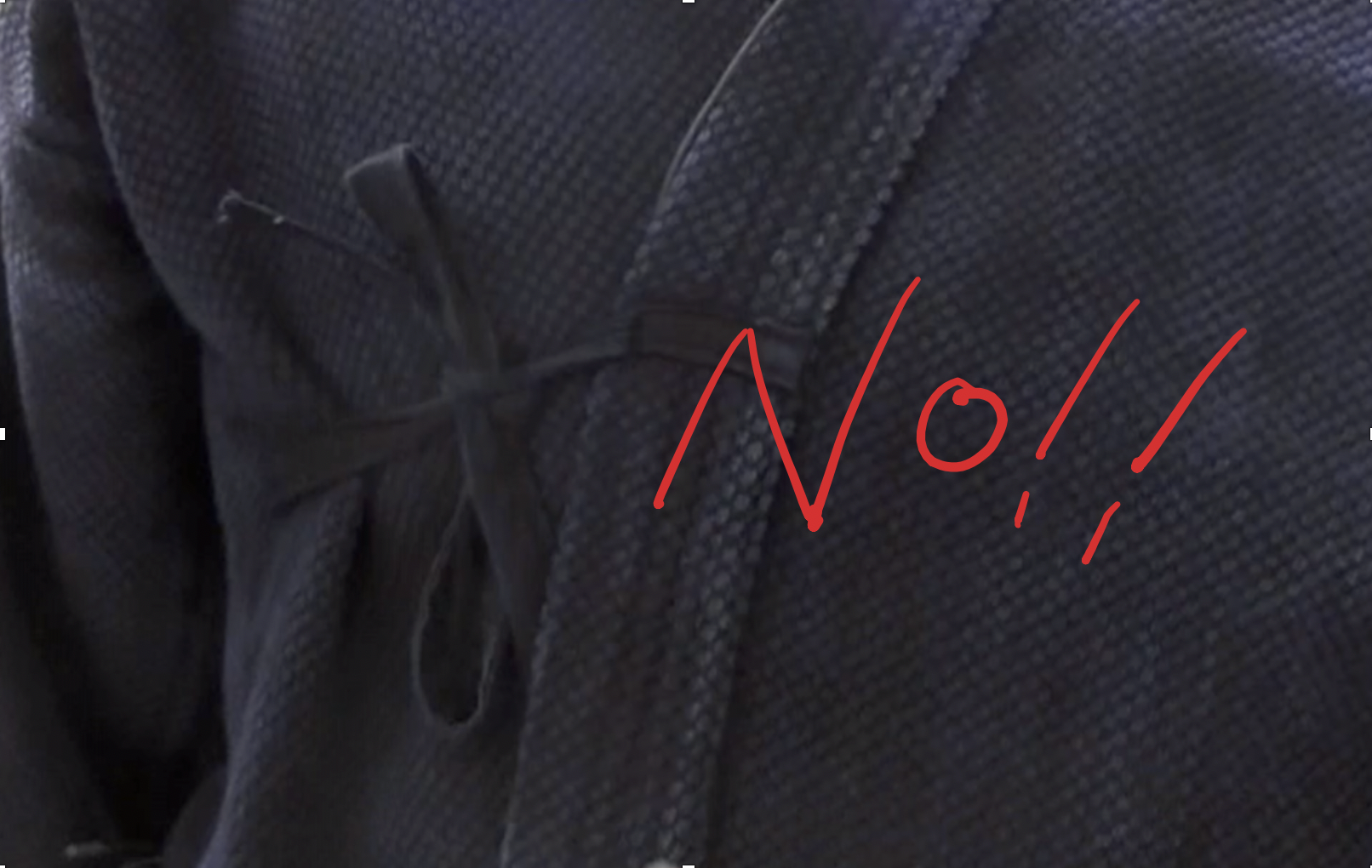 Figure 3: the bow/ribbon shouldn't be vertical. It should be horizontal
Figure 3: the bow/ribbon shouldn't be vertical. It should be horizontalAnd the back of the hakama should be slightly higher than the front. Of course, your hakama should look neat as well. Keep them nicely folded after keiko and dry them and fold them nicely. As long as you fold them nicely, you can keep them to have less wrinkles.
Worn Out Keikogi and Hakama
For keiko, I think it is OK to use color faded keikogi and hakama on as long as they are not too worn out. You really don’t look like a person who has wandered around for years. So, for practice, you can wear non-cotton keikogi so you can wash them as often as you want. And the color won’t be faded.
For hakama, as long as you are at your own dōjō, I think it is OK to wear tetron hakama. But if you visit some other dojos, then you should wear proper hakama. Some sensei think that you should wear cotton hakama once you become 5 dan or above. So you follow what your sensei says to you.
I see some people wear a cotton hakama with a lot of wrinkles. Once you have the wrinkles on the cotton hakama, it is hard to remove. If you have a wrinkled hakama, click to learn how to remove wrinkles on hakama.
Proceed to the next content >>> Posture for Kendo
Back to the previous content >>> Goals for Beginners
Click the button below to enhance your kendo experience and establish yourself as a true martial artist with the essential knowledge of etiquette and manners.
Safe transaction via PayPal
- Home
- Kendo Guide for Complete Beginners
- Kendo Etiquette and Manners

